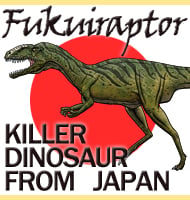Gobivenator
In Depth Although the holotype specimen of Gobivenator was missing major bones of the limbs, some vertebrae and the tip of the snout, it remains one of the most complete late Cretaceous troodontid dinosaurs known from late Cretaceous Asia. Two areas that have been important to note during the description are that the parietal bones … Read more
